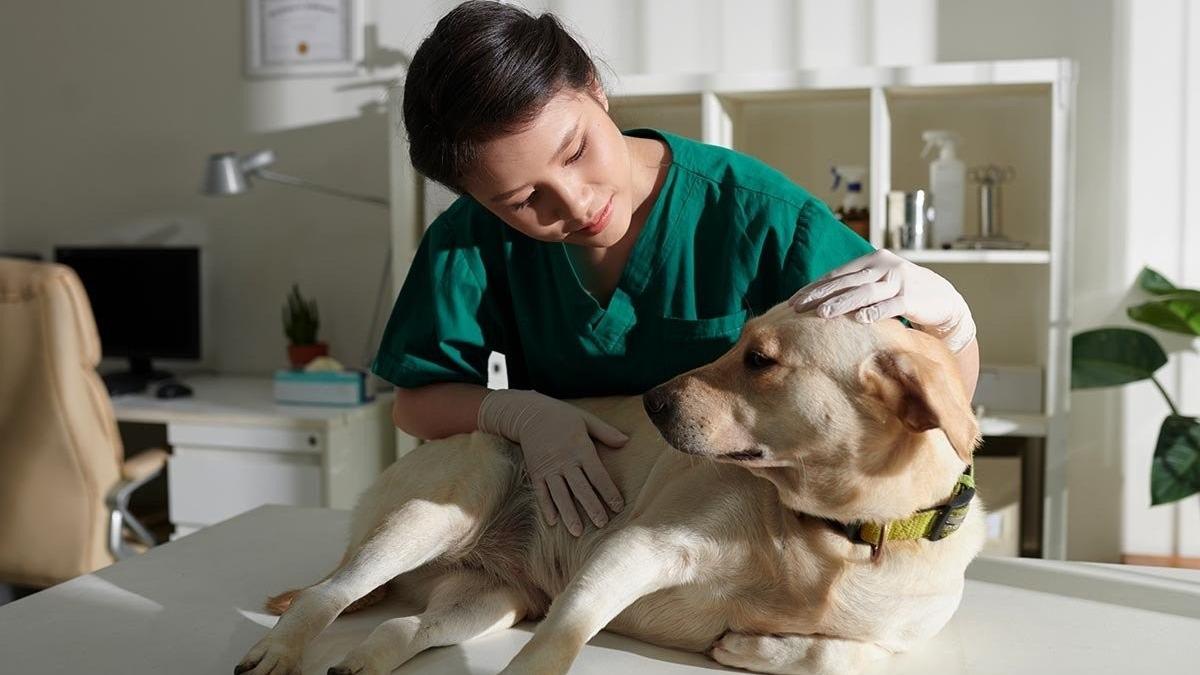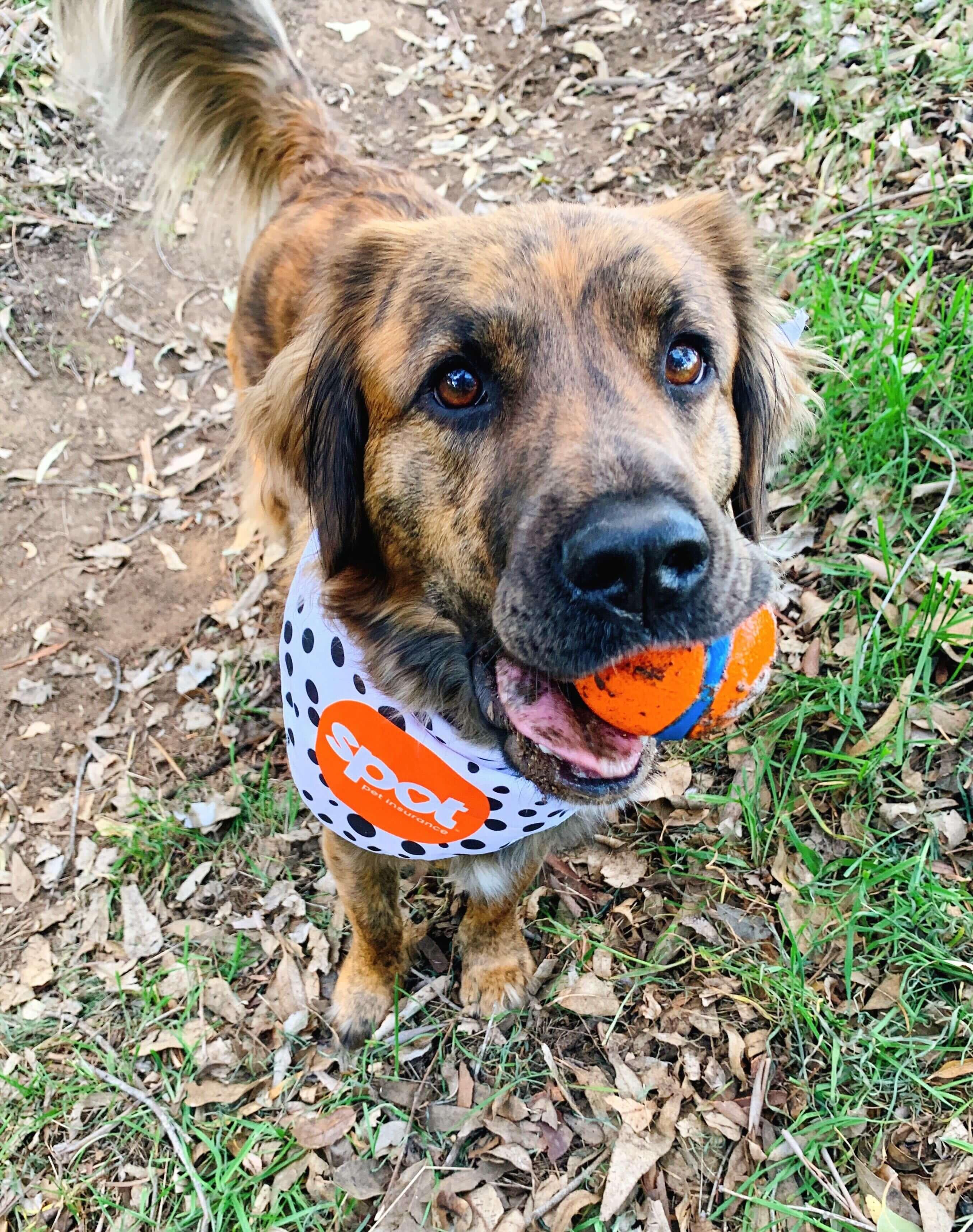When a pet emergency strikes, staying calm and prepared is the most important thing you can do. If your dog suddenly becomes unresponsive or stops breathing, knowing how to perform canine CPR could help save your pet’s life. While it’s a skill no one ever hopes to use, learning the basics can help you act quickly and give your dog the best chance of survival until they can get help from a vet.
What Is CPA in Dogs?
Cardiopulmonary arrest (CPA) occurs when a dog’s heart stops beating and they stop breathing2. Without immediate action, CPA can cause brain and organ damage within just a few minutes2.
CPA in dogs may be caused by2:
Trauma
Toxin ingestion
Choking
Heart disease
Acute or chronic illness
This is a life-threatening medical emergency. If you are home alone and cannot safely perform CPR, do not attempt it. Instead, rush your dog to the nearest emergency veterinary clinic.
How to Tell If Your Dog Needs CPR
It’s not always obvious whether a dog needs CPR, so take a few seconds to assess2:
Responsiveness: Call your dog’s name and try to gently wake them.
Breathing: Look for chest movement or feel for air at their nose.
Airway: Check for blockages like toys, food, or rawhide. If you see something, try to remove it carefully without pushing it deeper.
If your dog is breathing or responsive—even if unconscious—do not perform CPR. Instead, get them to an emergency vet immediately. If your dog is not breathing, is unresponsive, and allows you to open their mouth with no resistance, begin CPR right away.
What Is Canine CPR?
Canine CPR (cardiopulmonary resuscitation) is an emergency procedure that combines2:
Chest compressions to mimic the heartbeat and circulate blood.
Mouth-to-snout rescue breaths to mimic breathing and provide oxygen.
The purpose of CPR is to keep oxygen moving through your dog’s body long enough to reach a vet.
Step-by-Step Guide: How to Perform Canine CPR
1. Check for Breathing and a Heartbeat
Confirm that your dog isn’t breathing and has no detectable heartbeat1. If their chest is not moving and you can’t find a heartbeat, it’s time to start chest compressions.
2. Start Chest Compressions
Hand placement depends on your dog’s size and chest type1:
Small dogs/cats: Place the heel of one hand directly over the heart, and place your other hand on top.
Deep-chested dogs (like Greyhounds): Place the heel of one hand over the widest part of the dog’s chest, and place your other hand on top.
Barrel-chested dogs (like Bulldogs): Lay the dog on their back, place one hand over the widest part of the sternum and place your other hand on top.
Lock your elbows (keep them straight) and angle your shoulders so they are directly above your hands.
Perform compressions at a rate of 100–120 per minute, pressing down 1/3 to 1/2 of the width of the dog’s chest1. Let the chest fully recoil (return to normal size) after each compression.
Do 30 compressions1.
3. Give Rescue Breaths1
Here is how to perform rescue breaths on a dog1:
Close your dog’s mouth and extend their neck to open their airway.
Place your mouth over their nose and exhale until you see the chest rise.
Give a second rescue breaths.
4. Continue CPR
Repeat cycles of 30 compressions and 2 breaths1.
5. Check Every 2 Minutes
Briefly pause every 2 minutes to check if your dog has started breathing or regained a heartbeat1.
6. Transport to a Vet
The goal of at-home CPR is to buy time. As soon as possible, get your dog to an emergency veterinary hospital. If someone else can drive, continue CPR on the way. Never attempt CPR while driving.
Transporting Your Dog Safely
If your dog is unresponsive, moving them can be tricky. Place a towel, blanket, or sling under their body to lift them gently. Keep their head and neck supported and continue CPR only if another person can drive you to the vet.
FAQs About Canine CPR
How do you perform CPR on a dog? Start with 30 chest compressions at 100–120 per minute, followed by 2 rescue breaths1. Repeat this cycle until your dog breathes again or until you reach a vet.
Is dog CPR different from human CPR? Yes. While human CPR often focuses only on chest compressions, canine CPR requires mouth-to-snout breathing and hand placements that vary depending on the dog’s size and chest shape.
Is it worth doing CPR on a dog? Yes. While survival rates vary, performing CPR can extend your dog’s chances of making it to a vet to receive care.
What are the exact hand positions for chest compressions on different dog sizes?
Small dogs/cats: heel of one hand directly over the heart1
Deep-chested dogs: heel of hand over widest part of chest1
Barrel-chested dogs: dog on back, compress over sternum1
How do compression depth and rate differ between small and giant dogs? The compression depth is the same across sizes: 1/3 to 1/2 the chest width1. The rate is also consistent: 100–120 compressions per minute1.
Key Takeaway
Canine CPR is a critical emergency skill for pet parents. It should only be used if your dog is unresponsive and not breathing. While it cannot replace veterinary care, it can help keep your dog alive until you reach a clinic. By knowing how to assess for CPA, position your hands, and perform compressions and breaths, you can give your dog the best possible chance in a life-threatening situation.
More About Spot Pet Insurance
Spot accident and illness plans can be used with any licensed vet in Canada or the U.S. Whether you are home or traveling to the U.S., Spot can reimburse the cost of vet bills for the diagnosis, treatment, or management of covered conditions. Spot’s accident and illness plans can help cover a variety of conditions, including broken bones, lacerations, aggression, kidney disease, diabetes, and more. Pet parents can also get cash back on the cost of routine care, including wellness exams, certain vaccinations, dental cleanings, and more, by adding a wellness rider to their plan for an additional cost.
To learn more about Spot Plans or to get a free quote, click here.

The resident animal enthusiast at Spot. I have a lifetime of pet parent experience. If it has fur, feathers, or scales, I’ve probably shared my home with it. I aim to be a reliable source, blending experience with a dedication to the well-being of pets.
American Red Cross . “How to Perform Pet CPR | Red Cross.” Www.redcross.org, www.redcross.org/take-a-class/cpr/performing-cpr/pet-cpr.
Higgs, Veronica. “How to Perform CPR on a Dog.” Www.petmd.com, 7 Oct. 2024, www.petmd.com/dog/general-health/how-to-perform-cpr-on-a-dog.












